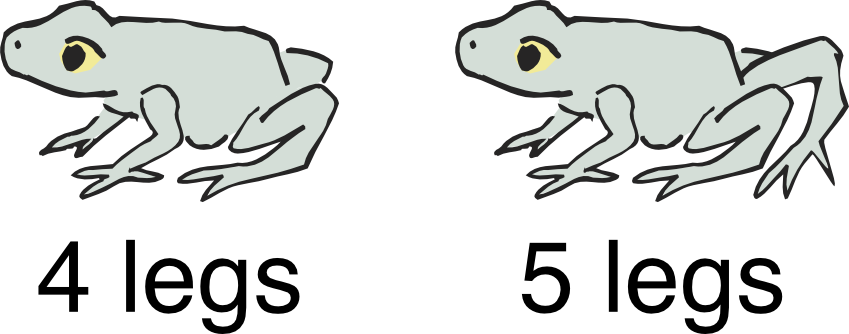2 Phenotypes and Parasites
If you click on and examine enough individuals, you should notice that some of the adult frogs have four legs while others have five.

You should also notice that some of the adult frogs, and some of the tadpoles, have orange dots on them. Others do not have orange dots.

The presence of an orange dot on a tadpole or frog indicates that the individual is infected with a parasite.
⚠️ Please note:
Infections can only be acquired by tadpoles—not by adult frogs. A tadpole becomes infected when it bumps into a parasite.
Once a tadpole becomes infected, it remains infected for life—even after it turns into a frog.
Infected frogs do not transmit their infection to their offspring. That means that every infected individual acquired its infection on its own—by bumping into a parasite.
Whether infection with the parasite has anything to do with a frog developing five legs varies from scenario to scenario—and is one of questions you will investigate.